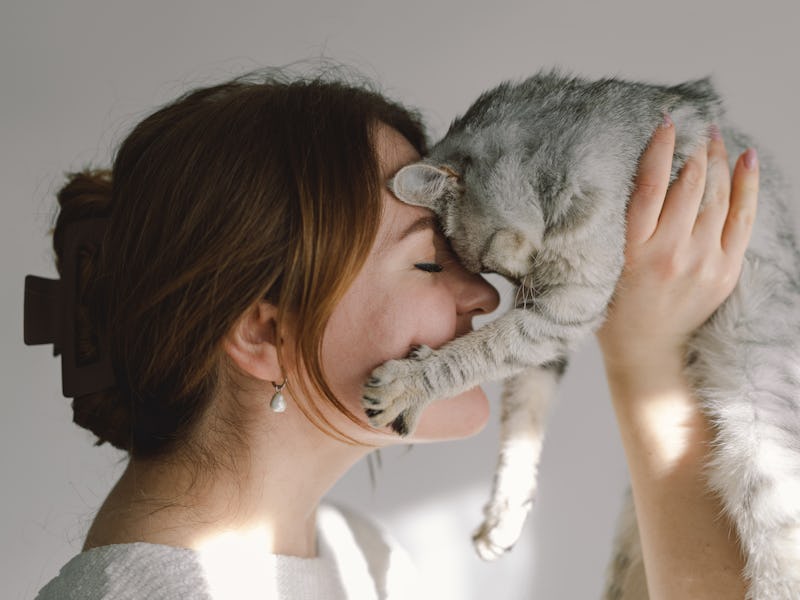Can You Learn to Meow Like Your Cat? Yes and No, According to an Animal Behavioralist
Just stick to treats.

Whenever my cat meows incessantly in my direction despite my attempts to play with him, I so wish I could just speak meow to figure out what he really wants. (Though I'd place my bets on it being treats.)
But this frustration has led me to wonder: Could I actually learn to speak cat?
Can I meow to my cat?
“It's kind of a yes-no answer,” Molly DeVoss, a cat behavior specialist, tells Inverse. Cats do recognize different pitches and tones, she says. In fact, cats seem to pay attention to the way their owners address them and can recognize whether they’re being spoken to based on voice and tone. One 2022 study published in the journal Animal Cognition found that if a pet owner spoke in baby talk to their cat, the cat responded with much more alertness to this voice than to their owner speaking normally to other humans or speaking to a stranger in baby talk.
Cats can also recognize recorded sounds of other cats meowing and yowling. (DeVoss advises using headphones or earbuds if you’re watching a video that features distressed cat sounds near your pet — “It would be like the equivalent in human-speak if somebody from the other room let out a blood-curdling scream.”)
Unfortunately, they can’t understand our meowing as a language. That’s the bummer news.
However, if you really want your cat to respond to your “meows,” there is an easy method: You can use classical conditioning to teach a cat to perform an action cued by a signal, such as a meow.“Then you can make it look like you're communicating with your cat,” DeVoss says.
The meow, in that case, doesn’t hold any actual meaning; it’s just a sound they’ve come to associate with an action and reward. Cats learn best from positive reinforcement, DeVoss says, so training them to perform a task in response to your most convincing meow (in exchange for a little treat) is possible, if only to impress your friends and family.
Do meows mean anything?
For all the meowing cats do to us, they don’t do it much among themselves.
“Everybody wants to be a ‘fill-in-the-species’ whisperer,” DeVoss says, “but vocalization is not a cat’s first language.”
As largely solitary beings, DeVoss says, cats primarily use scent and body language as a means of communication.
Felines do, however, have a suite of sounds that convey various messages across contexts, but they don’t meow at each other the way they meow at their humans. Mother cats and kittens, for example, meow at each other in the first weeks of a litter’s life to relay discomfort. Cats caterwaul while copulating, and hissing or yowling may preclude a catfight. Some felines may also chirp at each other as a greeting. Tigers, DeVoss notes, do this in an act called chuffing. Cats also purr — another form of vocalization — to express contentedness (at least that’s what we currently think).
But the sort of meowing that cat parents hear on a daily basis is a skill house cats have evolved to be very good at. A 2011 study published in the journal Behavioural Processes demonstrates that feral cats and house cats vocalize in markedly different ways, showing that mews are not a necessary language for independent cats.
What’s the best way to communicate with my cat?
A cat’s first language, DeVoss says, is smell. “They’re comfortable with things that smell like them,” she says. That’s why they’re often rubbing their faces against hard surfaces — because their cheek glands produce a pheromone that marks their territory. So, DeVoss recommends being patient with your cat’s approach and letting them get their stink all over you.
Along with vocalization, cats don’t usually care much for physical contact, she adds, so forcing your kitty to cuddle isn’t the best way to show your love. If you must speak to your cat, however, stick to your favorite baby talk — there’s evidence he knows you’re talking to him.